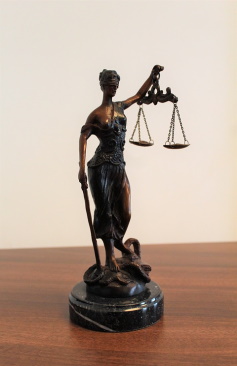History of Trial by Jury
By Ben Darlow
Published on May 19, 2014

Trial by Jury has traditionally been seen as the cornerstone of democracy and the rule of law in this country. This led Lord Devlin to dramatically comment in 1956 that trial by jury is the lamp which shows that freedom lives. However, this cornerstone has only been cemented for a few centuries. The origins of Trial by Jury, and more generally the swearing of 12 men to account for facts, goes back much further and even pre-dates the Norman conquest of 1066.
A jury is a body of people that are sworn to account for facts and to furnish courts of law with true and honest information. This idea was not unique to England and was used across ancient empires and within England and Normandy long before the Norman conquest.
At this early time, these bodies were called inquests. Its long history is attributable to the fact that without it, there was no efficient way to collect information about the number of livestock in an area or who owned which piece of land and where the boundary of that land was.
An inquest could also be held where 12 knights were summoned to provide information as to suspected criminals in their area. This process became known as the Grand Jury, as it was more general. The Petty Jury was a jury within a specific trial and will be discussed below.
The Petty Jury made its first proper appearance within 12th Century criminal cases. It became more prominent due to the fact that the Church disallowed the practice in 1215 of the Water and Fire ordeals as methods of proving guilt or innocence. Trial by Battle remained at this point but was already out of favour and the Jury was primed and ready to take over.
Following on from this in the later 1200s and 1300s, Trial by Jury became significantly more common in all trials of wrongdoing in the courts. Furthermore, there was also discussion as to the nature of the Jury. Were the jurors to be treated like witnesses and individually examined or treated as a collective body? Case law in the 14th and 15th Century cemented the idea of the Jury as a collective institution.
To prevent improper influences and to preserve the honesty of their information, it quickly became very serious to communicate with a juror once they were sworn. The Jury was sequestered away from the influence of outside items or information. It was taken to the extreme and in a case of the late 1500s, 4 jurors were fined for possessing raisins and plums while sworn. It makes the modern day s.8 of the Contempt of Court Act 1981, which protects the confidentiality of Juries, seem mild.
In early Trial by Jury cases, if the jurors were not unanimous the judge could step in to decide one way or another. By 1367, case law strongly affirmed that unanimous verdicts were a necessity. This has eventually over the centuries gone back to majority verdicts being officially allowed, with the most recent law being contained in s.17 of the Juries Act 1974.
The state of affairs outlined above lasted for several centuries. There were a string of Juries Acts, prominent among them: 1825, 1850, 1949, and 1974, the latter being the most recent and currently in force edition. The general thrust of this string of legislation was to codify and make amendments to the law surrounding Juries which until that point was mainly contained within case law.
The Author

Ben Darlow is the author of the English Legal History blog and has an LLB (Hons) Law degree from the UK’s University of Leicester.
He has always had a healthy academic interest in, and fascination with, Legal History and established the English Legal History blog in April 2013 to bring that interest to a wider audience in an easy-to-digest and accessible format.
Article picture: Pixabay.


